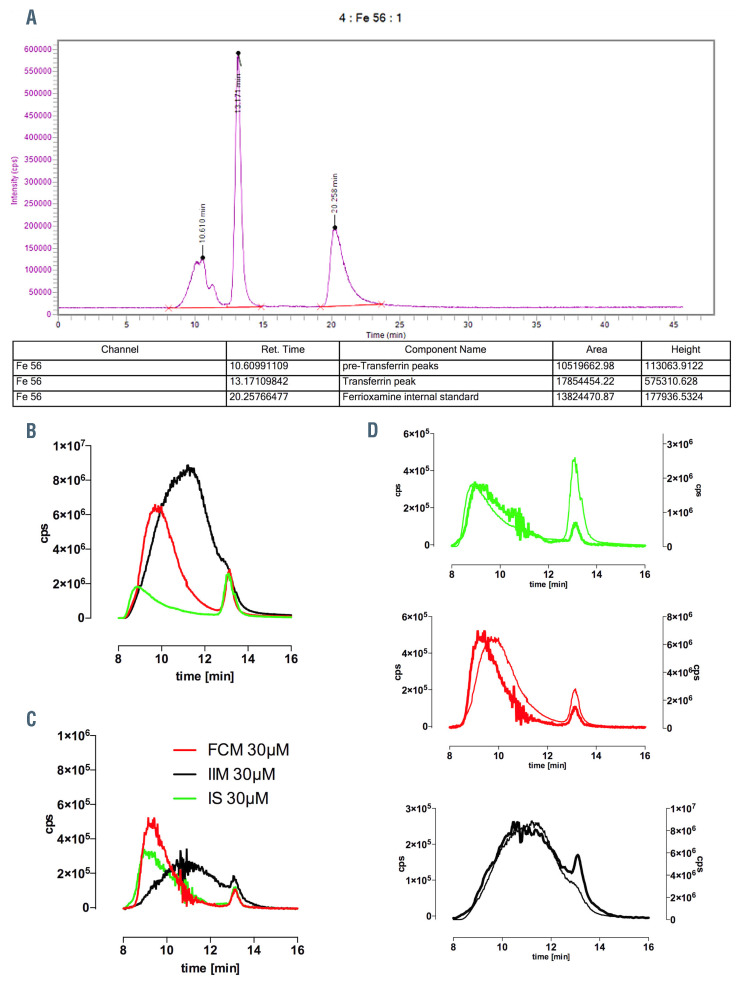Figure 2.
Chromatography of the intravenous iron-carbohydrate complex preparations using HPLC-ICPMS at KCL. (A) An example serum sample high-performance liquid chromatography in combination with inductively coupled plasma mass spectrometry (HPLC-ICP-MS) run with integration of chromatograms within the Chromera software. (B) The subtraction chromatograms of intravenous iron-carbohydrate complex preparations (IVIP) in serum samples (ex vivo), baseline subtracted from the 4 hour (h) time-point. Variable abundance is a function of the given IVIP half-life at 4 h; transferrin peak (at 13.2 minutes [min]) indicates the iron exchange from IVIP to apotransferrin. The precision of subtraction is validated by the overlay of the internal standard (not shown) converging on 15 μM FO (subtraction of 5 μM from 20 μM). (C) The subtraction chromatograms of IVIP (30 μM) incubated in vitro with 20% serum for 1 h with control chromatograms subtracted. Distinct chromatograms for Fe-isomaltoside-1000, Fe-sucrose and Fe-carboxymaltose identified. Small iron signal at 13.2 min is ferrotransferrin testifying to exchange of labile iron between polymers and apotransferrin. (D) Comparison of in vitro (thick) and ex vivo (thin) IVIP chromatograms from B and C using two y-axes for peak size adjustment. At 4 h post-infusion patient samples show distinct shift of the peak elution time, which indicates that principal IVIP species changes with time i.e., that larger species are preferentially removed from plasma. Fe-carboxymaltose shows greatest shift of peak time.

